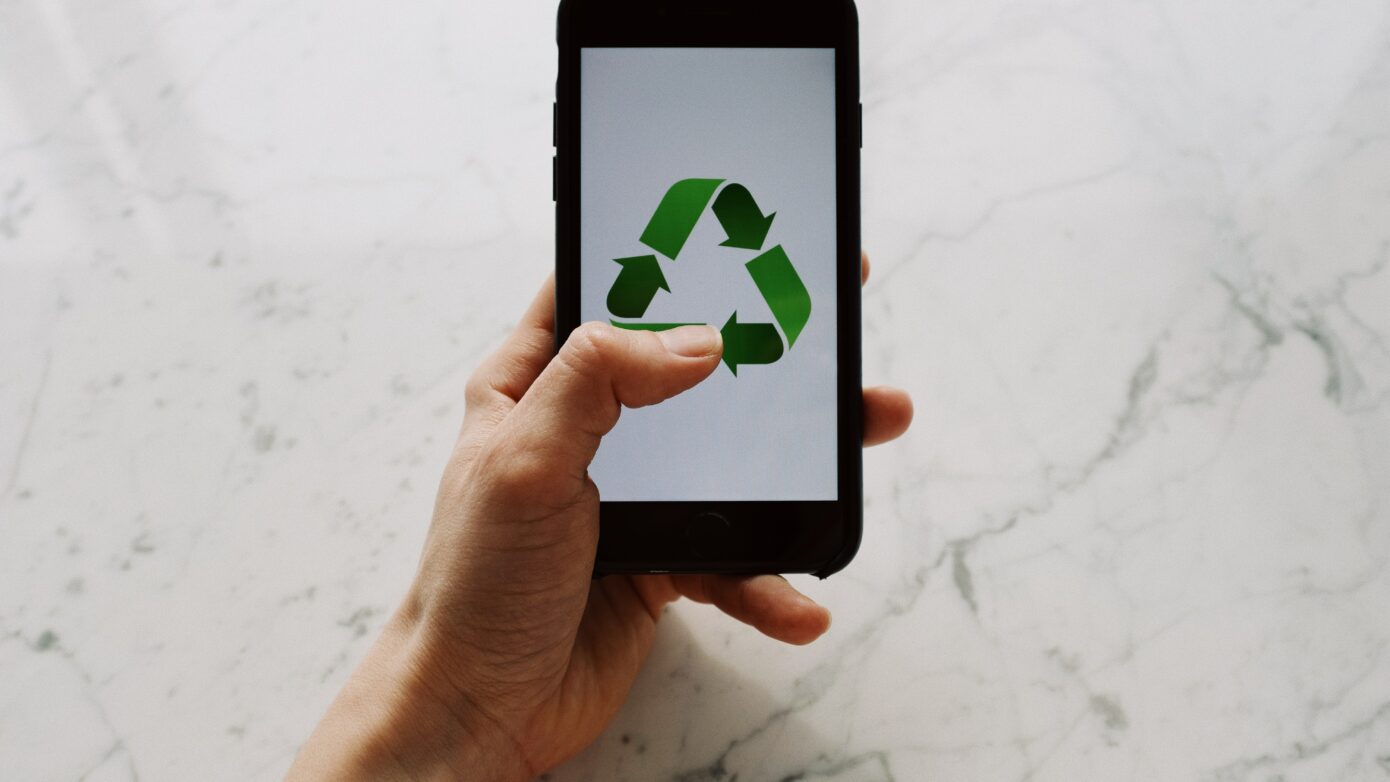Recent studies have shown that in France, the average lifespan of a smartphone is 23 months. However, according to ADEME (the French Environment and Energy Management Agency), keeping your equipment for an extra 2 years can reduce its carbon footprint by almost 50%.
Given that the manufacturing phase is the most costly in terms of carbon (it alone generates almost 79% of the overall footprint of the finished product), extending the life of a piece of equipment prevents the whole process of manufacturing a new one, and preserves raw materials.
The most important thing is to avoid replacing equipment unnecessarily, and to favor repair or second-hand purchase. A reconditioned smartphone is on average 8 times more virtuous than a new one. So, adopting an end-of-life strategy for equipment by reconditioning, recycling or donating it to associations is a priority.
Individual “small gestures” (unplugging equipment, emptying mailboxes, reducing the size of attachments, favoring WiFi over 4G / 5G…) are often highlighted in awareness campaigns because of their accessibility and immediate effect, but the real impact of new digital equipment on the environment is far greater.
To change this paradigm and promote sobriety in the purchase and use of digital equipment, here are a few strategies that could be implemented :
Comprehensive education and awareness-raising
It’s important to continue raising consumer awareness of the environmental impacts of digital equipment. This can be done by highlighting the carbon footprint of their production, use and disposal. What can be done?
– Organize workshops, webinars and conferences to explain in detail the environmental impact of the production, use and disposal of new digital equipment.
– Use case studies and figures to show the differences in carbon footprints between new and refurbished products.
Environmental labelling
Environmental labels provide information on the carbon impact and sustainability of products. Their purpose is to enable buyers to make more informed decisions. What can we do?
– Work with environmental certification bodies to develop clear and understandable labeling standards that indicate carbon footprint, sustainability and other relevant ecological criteria.
Economic incentives
Offering tax breaks or discounts on more durable or refurbished electronic products is also a good way of encouraging consumers to opt for more environmentally-friendly choices. More concretely, what steps should you take?
– Offer discounts or tax breaks for purchases of reconditioned equipment or energy-efficient appliances.
– Set up low-interest financing programs to encourage the purchase of sustainable equipment.
Promoting the circular economy
Encouraging the purchase of reconditioned or second-hand equipment can reduce demand for new products and extend the life of appliances. How can we encourage this initiative?
– Establish partnerships with reconditioning companies and used-product sales platforms to promote more sustainable consumption options.
– Create awareness campaigns to explain the economic and environmental benefits of buying refurbished products.
Regulations
Governments can introduce regulations to encourage manufacturers to design products that are more durable and easier to repair, and to adopt environmentally-friendly manufacturing practices. How can this be done?
– Introduce minimum sustainability standards for electronic products, such as minimum lifespan and ease of repair.
– Impose taxes or duties on new electronic products with a high carbon footprint, to stimulate demand for more environmentally-friendly products.
The evolution of communication
Awareness campaigns can also convey information about the major impact of manufacturing new digital equipment. It’s essential to show that sustainability is not just about small, everyday gestures, but also about the wider choices we make as consumers. How can we improve?
– Create powerful media campaigns that highlight the environmental consequences of manufacturing new equipment.
– Use visual comparisons to illustrate the carbon impact of buying a new appliance versus repairing or reconditioning an existing one.
Industry collaboration
Technology companies can play a positive role by working to reduce their carbon footprint, promoting repair over replacement and adopting more sustainable business practices. Which levers to pull?
– Encourage companies to adopt eco-responsible design practices, such as modular design to facilitate repair and upgrading.
– Set up public-private partnerships to support research and development into more sustainable technologies.
By combining these strategies (economic incentives, appropriate regulations and increased awareness), it is then possible to create a respectful digital ecosystem. However, shifting the paradigm will require a combination of efforts from governments, industry, environmental organizations and consumers alike. It is crucial to emphasize that the transition to more sustainable digital use is a collective effort that goes beyond small individual gestures.




